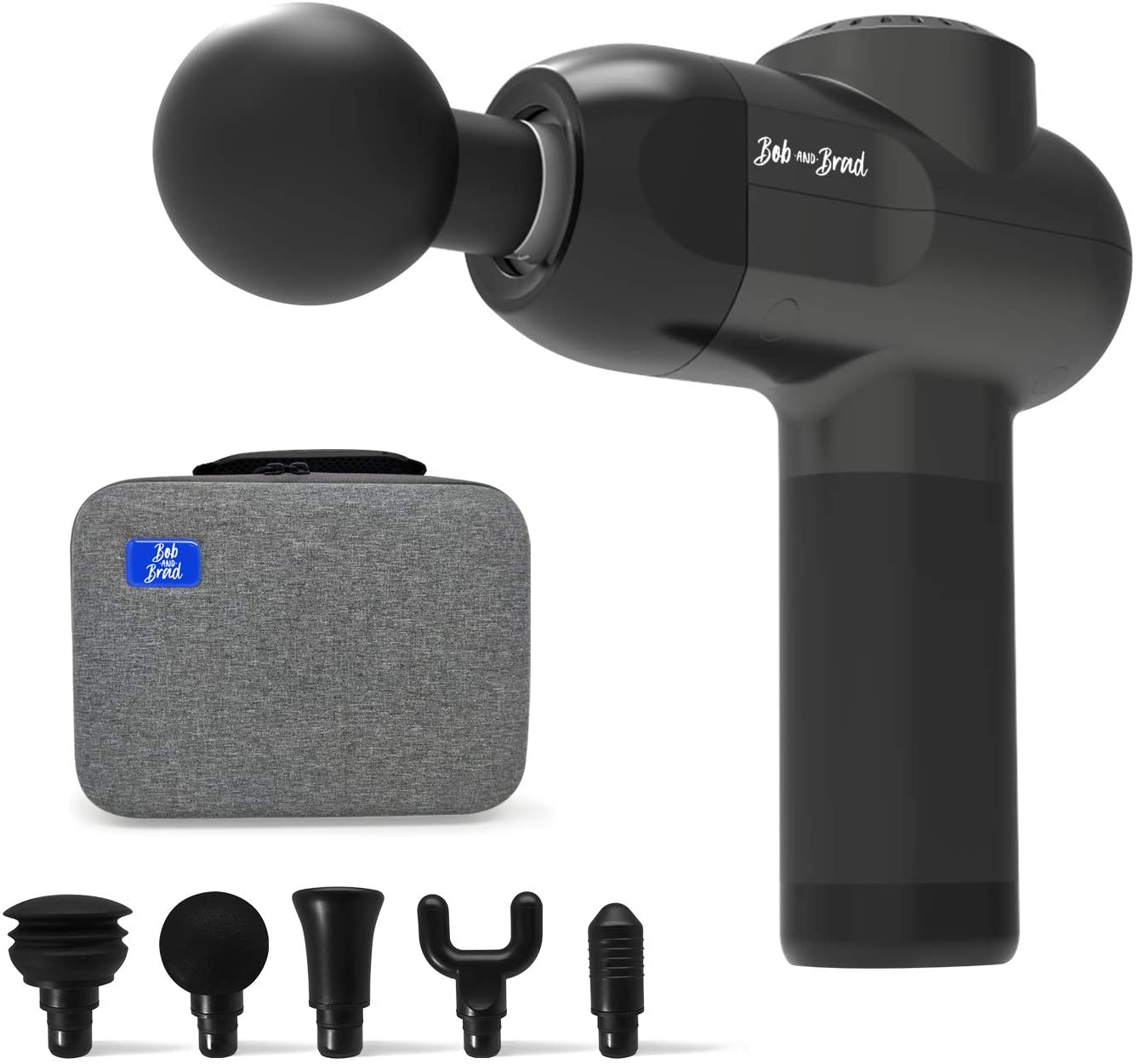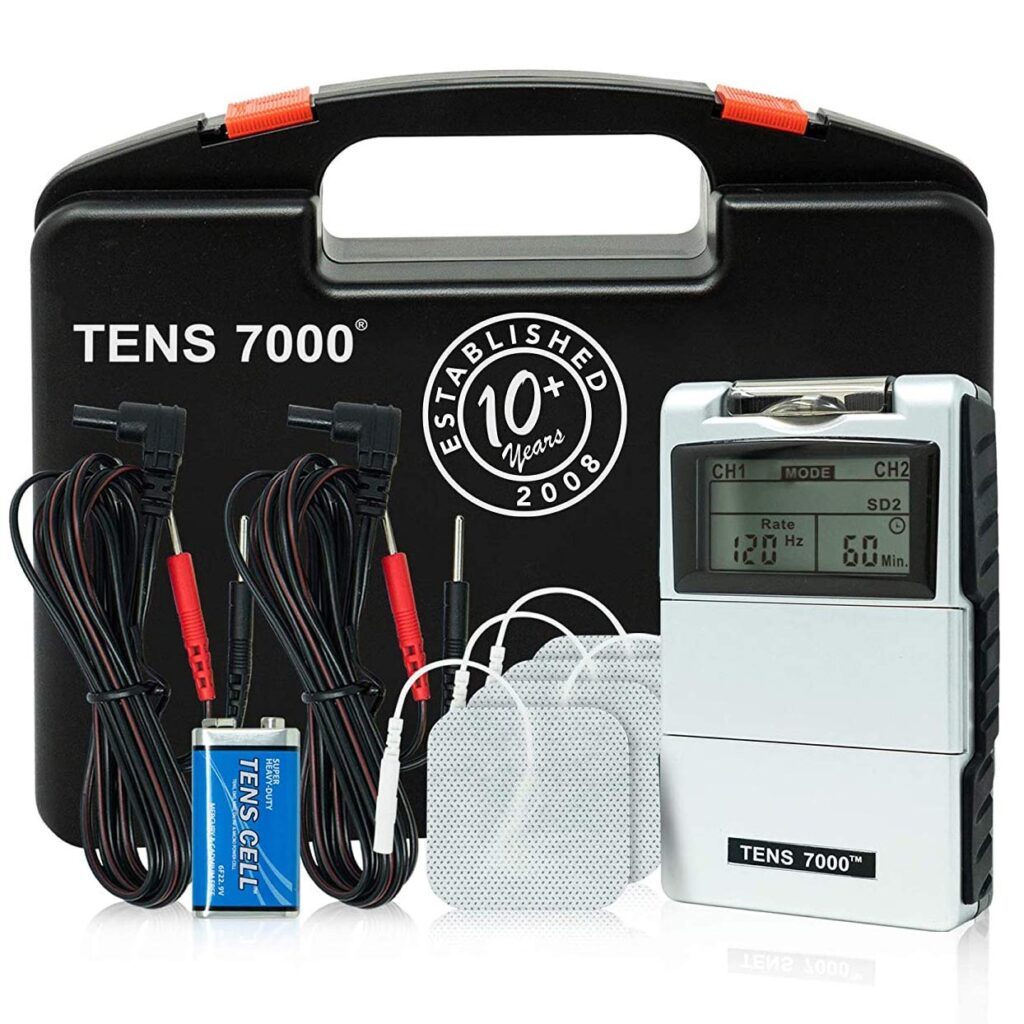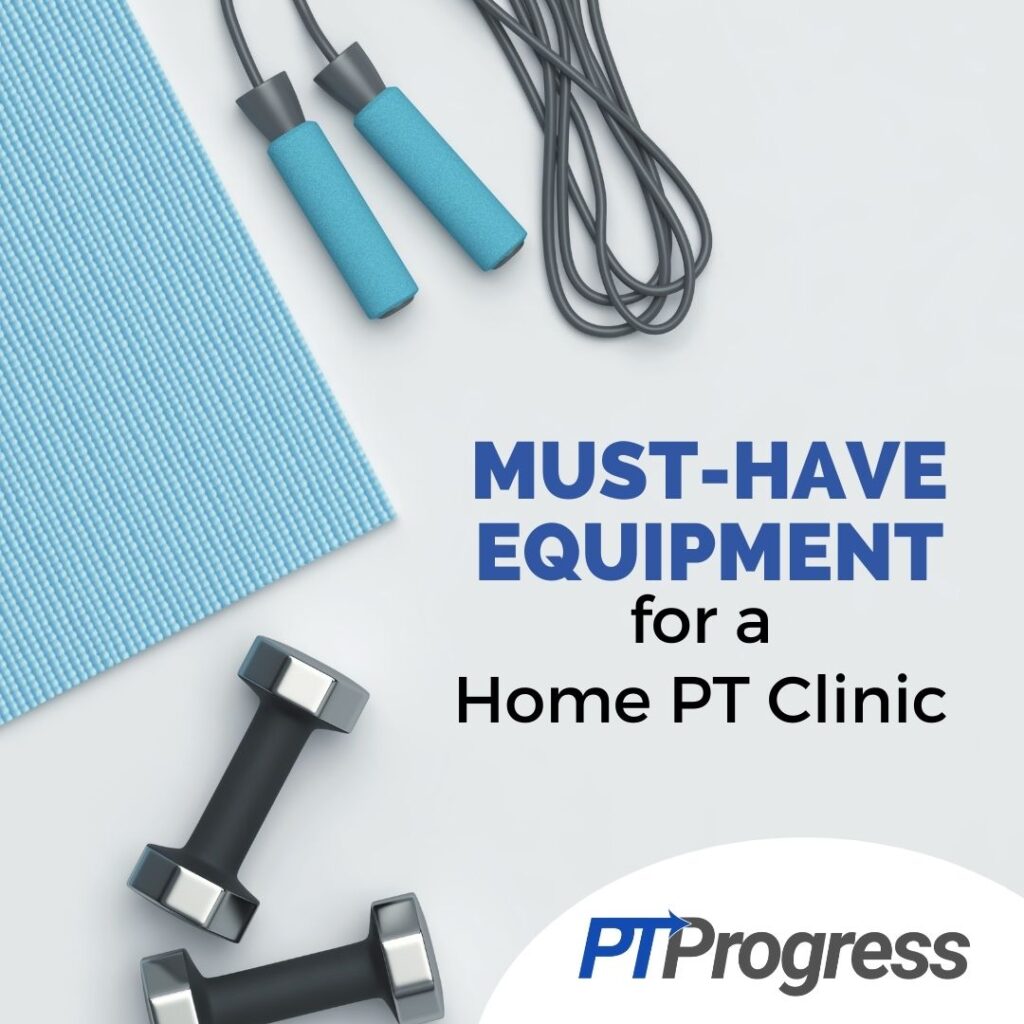
Do you wish you could bring the PT clinic home with you? These 7 pieces of physical therapy equipment will help you replicate the benefits – and results – of PT at home.
Using Physical Therapy at Home
As you leave the clinic on your last day of physical therapy, you may have mixed feelings: joy in reaching your rehab goals, but apprehension over whether you can continue the progress on your own. After all, a huge portion of your success in physical therapy is determined by what you do at home, and staying on the couch will only undermine your results.
From workout videos to stationary bikes, there’s a plethora of home exercise equipment ready to pad the walls of your basement. But recreating a PT clinic doesn’t require expensive, hefty gym machines. All you’ll need are these 7 essential pieces of physical therapy equipment.
7 Pieces of Home Physical Therapy Equipment
Unlike cardio machines, PT equipment is easy to use, easy to store, and cheap. Best of all, these pieces will help you reach your goals at home, whether you want to continue your rehab, avoid surgery, or build strength and stability.
1. Set of Resistance bands
- What it’s good for: stretching and strengthening
- Specs: from 5lbs-100lbs resistance, with or without handles
- Price: ranges from $20-$100 for a set
- Product spotlight: Bob and Brad Set of Resistance Bands
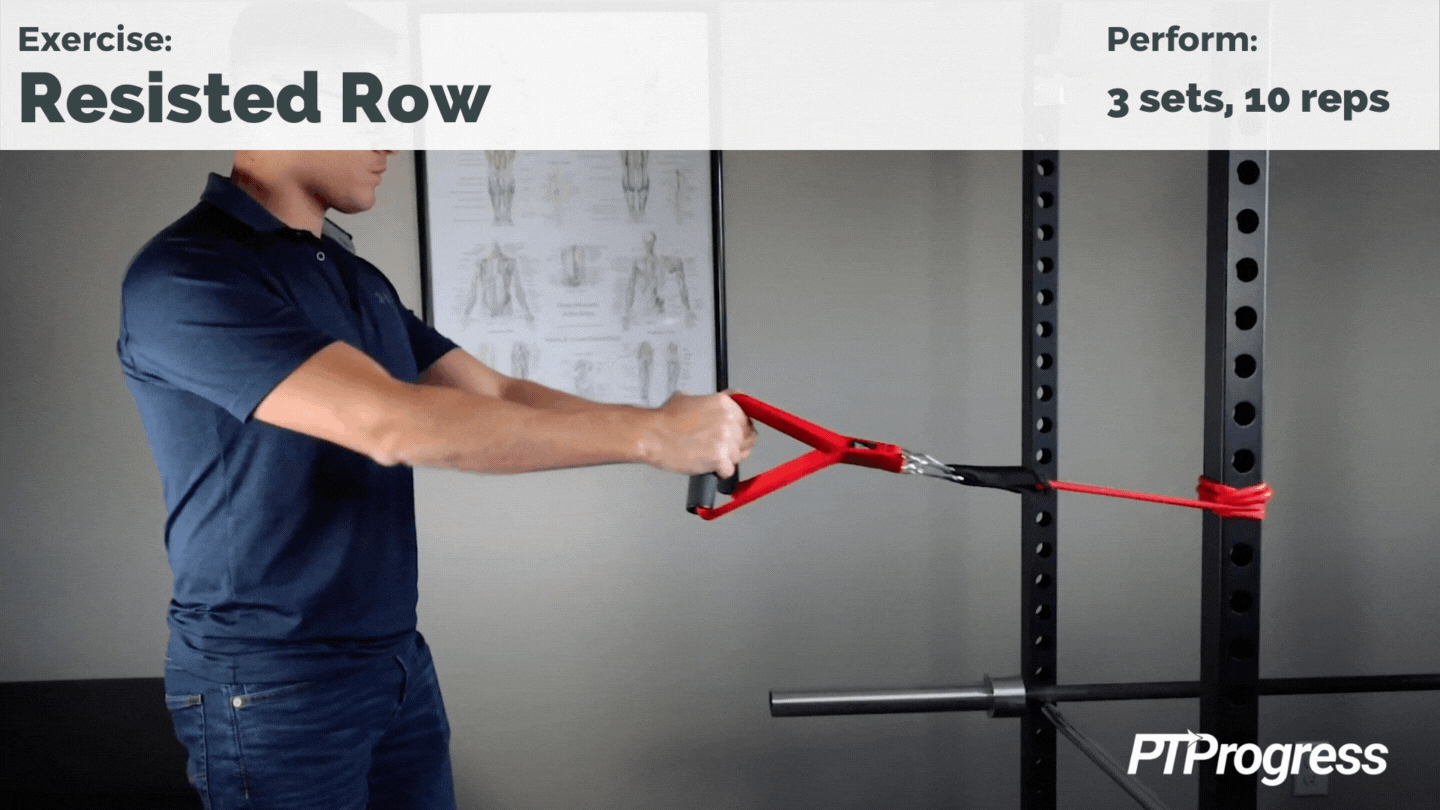
Outside of the PT clinic, resistance bands are some of the most underrated pieces of exercise equipment. Inside the clinic, however, you’ll notice we PTs use them for nearly everything.
Everyone can benefit from resistance bands. Whether you need to challenge an active stretch or complete a full workout, you can use a resistance band to get the job done.
Even a small set of resistance bands will provide a wide range of resistance, from a couple pounds to 100 pounds. Some bands include handles which you can place inside a doorway to change the angle or range of motion. Because you can move the point of tension, with resistance bands you can work on specific muscles – such as the rotator cuff – that are harder to isolate otherwise.
2. Stretch strap
- What it’s good for: stretching, yoga
- Specs: length ranges from 72-96 inches, with 9-12 loops
- Price: ranges from $7-20
- Product spotlight: Original Stretch Out Strap
In place of a physical therapist, a stretch strap can counteract and deepen your stretch, challenging your flexibility. Most straps have several loops or knots to help you secure your pose. These handy tools are fairly inexpensive but enormously effective at improving flexibility and reducing muscle tension.
No matter your level of flexibility, a stretch strap can help you get the most out of your stretches. Athletes and yogis rely on these straps to replicate partner-assisted stretching. But even if you don’t have much flexibility, the stretch strap will serve as a scaffold, bridging the gap between your hands and toes – or whatever part of your body you loop in.
And if stretching with a strap seems confusing to you, don’t worry – many models, like this one, come with a helpful stretching guide.
3. Foam roller
- What it’s good for: stretching, exercise, releasing tension
- Specs: ranges from 12-36 inches long, 4-6 inches in diameter
- Price: ranges from $12-30
- Product spotlight: ProSource Fit
The foam roller is one of the best-loved pieces of physical therapy equipment; so simple, yet so effective at massaging away tension. Foam rollers come in a narrow range of densities and sizes but have a wide range of uses.
If you need to work out a kink in your back, try lying down on a foam roller. It’s like an upside-down massage therapist, pressing up into your back as you roll it under and around your knots. But if your pecs are tight, a foam roller will open up your chest by elevating your spine off the ground so your shoulders drop back towards the floor.
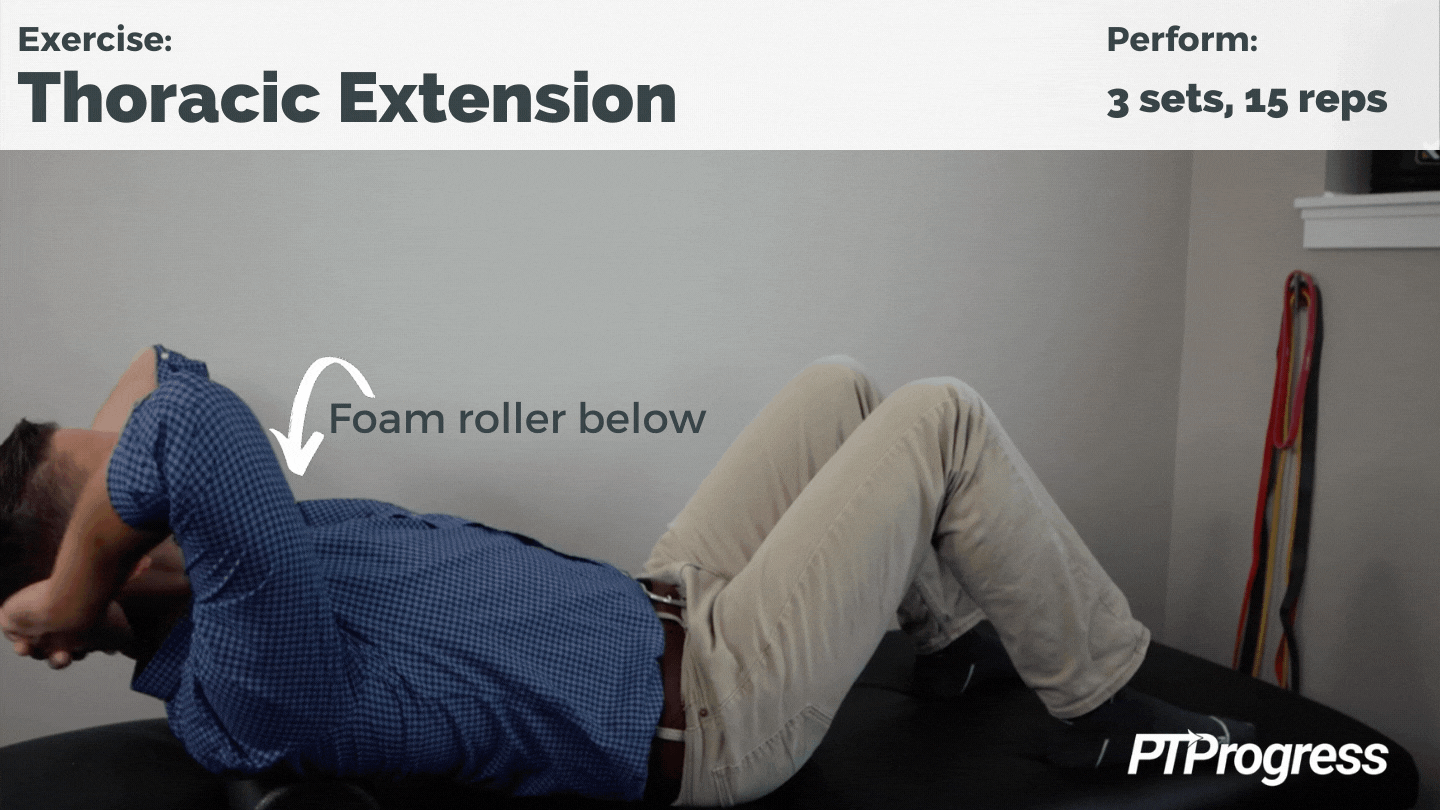
There are a number of stretches and exercises on this very blog that rely on a foam roller, and we use them all the time in the clinic. Don’t PT at home without one!
4. Adjustable weights (hand or ankle)
- What it’s good for: resistance exercise
- Specs: weights range from 1-10lbs
- Price: ranges from $25-65
- Product spotlights: Nice C (hand weights) and Fitnessery (ankle weights)
After you’ve finished your treatments at the PT clinic, you may want to continue your exercises at home. Adjustable ankle weights or hand weights offer “incremental resistance” so that you can scale up your exercises and continue building strength.
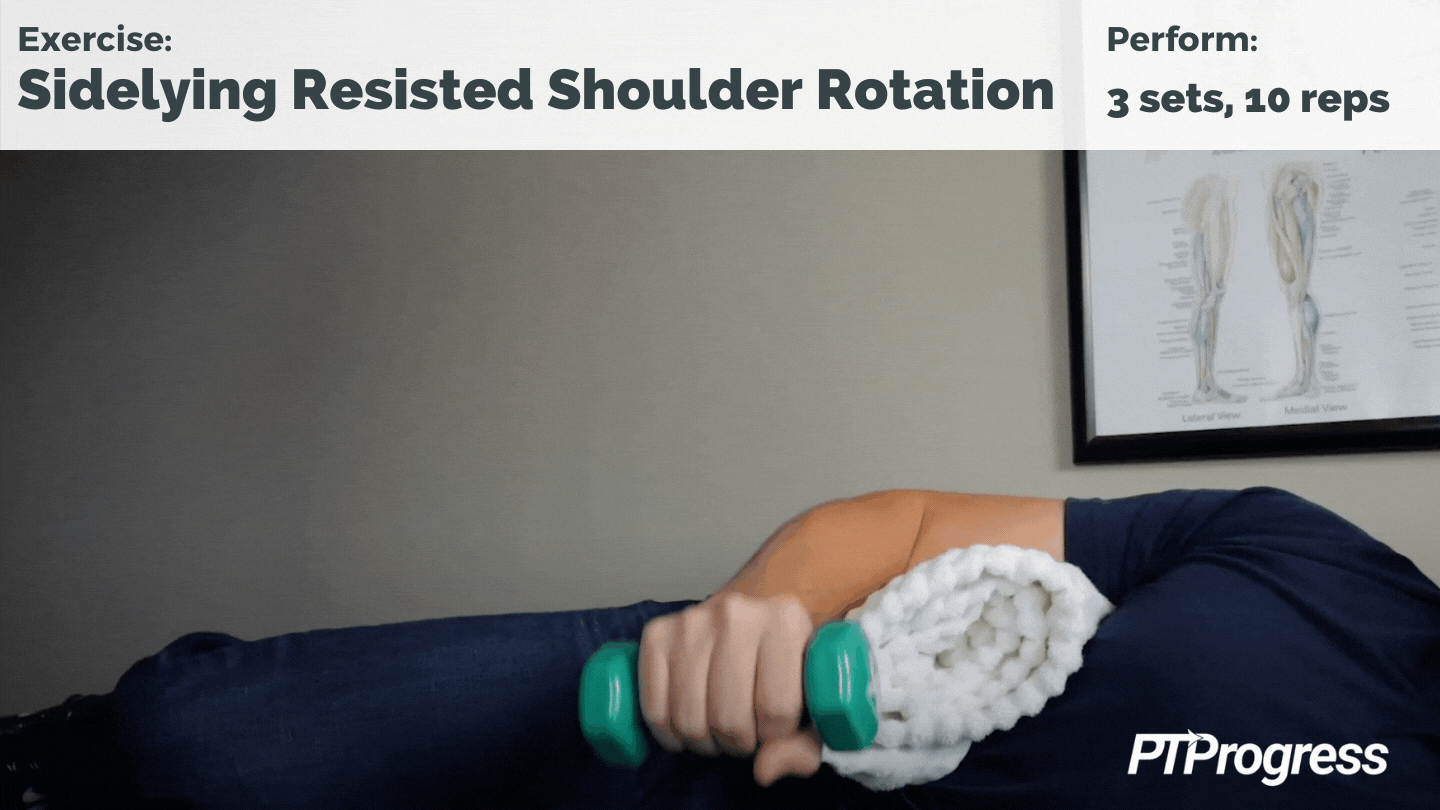
If you’re looking to level up a workout, strap on some ankle weights – even a single pound of extra resistance will make a big difference. You can also use ankle weights to target your balance, because stronger leg muscles directly improve balance.
Small hand weights are especially useful when you’re rehabilitating an injury like a torn rotator cuff and want to slowly progress to a heavier weight. Because these weights are adjustable, you’ll get more use out of them and find that they store really well!
5. Balance pad
- What it’s good for: balance exercises
- Specs: sizes range from square to beam, 10” – 64”
- Price: ranges from $20-65
- Product spotlight: Airex
No matter your age, a shaky sense of balance could get you into trouble. I help all kinds of patients improve their balance using strength exercises, dynamic stability, and a helpful tool called a balance pad.
Even if you’re otherwise strong and fit, a balance pad makes every exercise instantly harder, whether it’s standing on one leg or performing full squats. Balance pads introduce an element of dynamic balance, meaning you have to engage more muscles to stay stable as the surface responds to your movement.
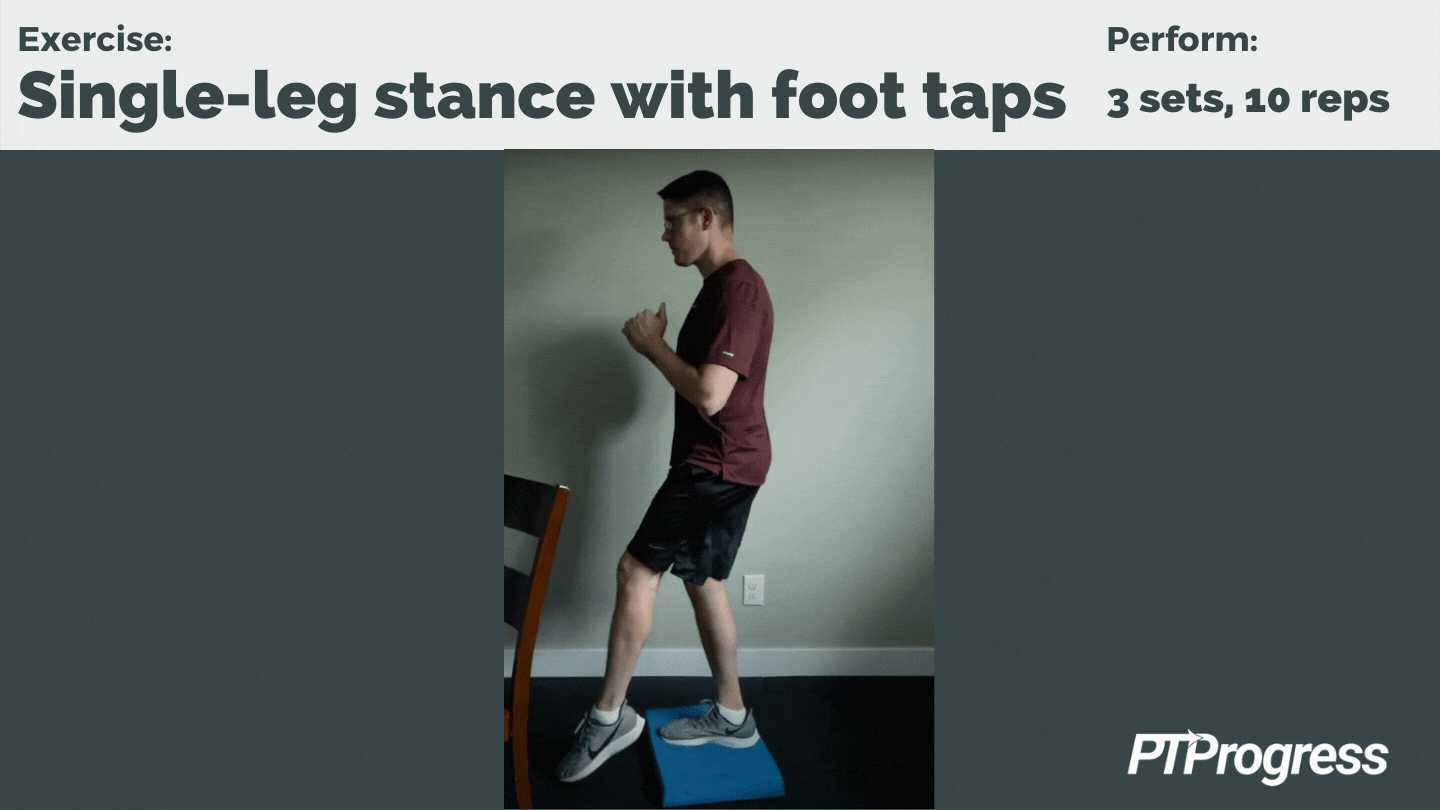
It doesn’t take much to challenge balance at first, so be sure to set it up in an area of your home where you can easily grab to steady yourself. For most people, the standard square pad provides plenty of challenge. But you can also get a long beam pad for things like lunges or walking toe-to-heel.
6. Overhead pulley
- What it’s good for: shoulder rehab (frozen shoulder)
- Specs: one size
- Price: $12-25
- Product spotlight: RangeMaster
As a ball-and-socket joint, the shoulder is particularly susceptible to injury, whether it’s tendonitis, a frozen shoulder, or a torn rotator cuff. If you come into a PT clinic with a shoulder injury, you probably won’t leave before performing the overhead pulley stretch.
An overhead pulley system consists of rope, a metal pulley, and a strap that hooks into the top of a closed door. With your back to the door, you’d sit down and use the pulley to work on your range of motion and overhead shoulder strength.
At prices as low as $12, the overhead pulley is certainly worth adding to your PT home equipment. It will help you strengthen your shoulder in all directions and replicate the results we see in the clinic.
7. Yoga ball (fitness or stability ball)
- What it’s good for: exercise, stability, yoga
- Specs: sizes range 45-85cm in diameter
- Price: ranges from $20-50
- Product spotlight: Trideer
A yoga ball is a thick, inflated rubber ball strong enough to support your weight. Some fitness balls are weighted with sand for stability or extra resistance.
Both lightweight and sturdy, a yoga ball is useful for a whole host of exercises – not just yoga! A quick search on the internet yields dozens of free fitness ball workout routines. In general, a fitness ball is sized by height, and one that is too tall or too small will be less effective. If you’re worried about the ball rolling out from under you, look for one that comes with a stability ring.
If space allows, a yoga ball can help you incorporate dynamic stability in your crunches, pushups, planks, and other exercises. You may even use the yoga ball as a chair when you’re not working out. Whether you’re looking to strengthen your core, improve your balance, or challenge your stability, a fitness ball will give you a run for your money.
Special PT Equipment for Home Use
You can build a solid home PT clinic using the above 7 pieces of physical therapy equipment. But to take it a step further and round out your home treatment plan, consider these additions:
Massage gun
I’ve reviewed many different types of massage guns on this blog, and that’s because we PTs use massage guns often, both in the clinic and at home.
Just like getting a professional massage, a massage gun can help you relax, work out tension, and aid muscle recovery. But you don’t have to limit its use to a recovery aid; a massage gun may also help you warm up or work out without pain.
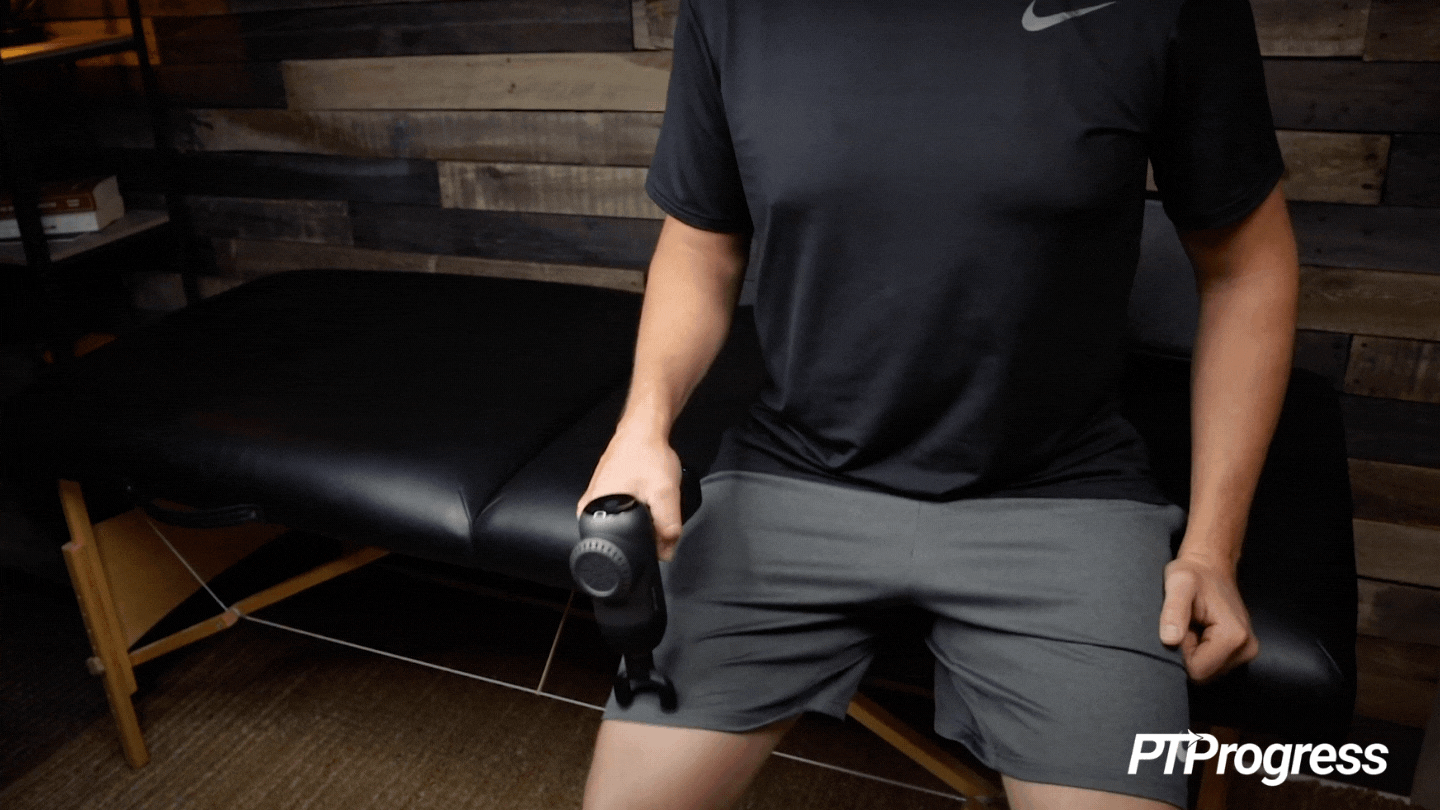
Most massage guns come with interchangeable heads and adjustable speeds. The price ranges widely among brands, but this standard C2 from Bob and Brad retails at just over $140 – a steal for a gun of this quality.
Ice packs or hot packs
- What it’s good for: pain, recovery
- Specs: sizes range from 6-21 inches, with straps or not, heat or cold
- Price: ranges from $10-30
- Product spotlights: Chattanooga and Magic Gel
Physical therapy isn’t all exercise. A large portion of your recovery involves other treatment modalities, such as heat or ice therapy. A heating pad may help you warm up your muscles before a workout or soothe away stiffness the next day. But if you need to relieve pain or recover from a brutal workout, an ice pack will work wonders. Some packs are dual purpose, able to retain heat or cold.
If you need to ice a particular injury, such as plantar fasciitis or a torn rotator cuff, look for a brace that includes an ice pack or a pocket for one. There are even wearable heat pads – something you strap on like a belt or drape over like a shawl.
Remember to limit ice therapy to 20 minutes at a time, and use a thin towel to shield your skin from the cold ice pack.
TENS unit
You might assume that the electrical stimulation treatment you enjoyed in rehab isn’t available outside of the clinic, but the good news is you’d be wrong. There are several brands and types of TENS units available for home use, so you can easily find one that meets your needs.
Generally, the e-stim therapy from a TENS unit will help relieve pain, especially from injured sites. Many athletes use TENS to recover from a tough workout, but you can also channel e-stim to prevent muscle atrophy when under bed rest.
Check out this article for 4 great TENS units you can buy online.
Physical Therapy Home Clinic: Final Thoughts
Once you’ve gathered each of these items and tailored your home gym to your physical therapy needs, there’s just one more ingredient missing: intentionality.
When you regularly visit a physical therapist, he or she holds you accountable to your workout and makes sure you maintain proper form for each exercise. When you’re at home, that responsibility is squarely on you.
I’ve shared countless resources on this blog to help you continue your PT progress at home. So long as you stick to your routine, stay motivated, and check in with your doctor when you need to, I know you’ll be successful.



